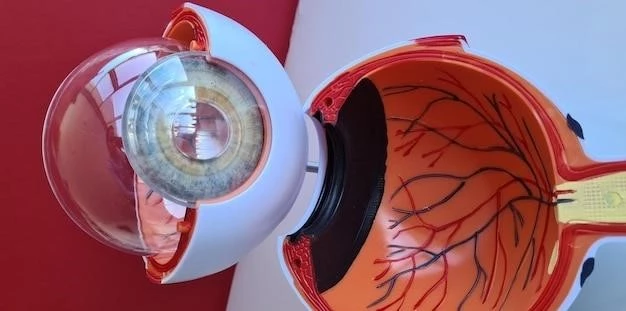Article Plan⁚ Disease ‒ Optic Disc Drusen

Introduction to Optic Disc Drusen
Introduction to Optic Disc Drusen⁚ Optic Disc Drusen are abnormal protein-like deposits in the front part of the optic nerve, affecting about 1% of the population. These deposits, formed by fatty proteins and calcium, can harden with age and are known by various names like pseudopapilledema. The exact cause of Optic Disc Drusen remains unknown, and they may run in families or occur as an isolated case. Early detection through eye exams is crucial for managing this condition.
Causes and Risk Factors
Causes and Risk Factors of Optic Disc Drusen⁚ The exact cause of Optic Disc Drusen is not fully understood, but they are believed to result from abnormalities in the flow of material within optic nerve cells. These abnormal deposits, composed of fatty proteins and calcium, can harden over time, leading to Optic Disc Drusen. Risk factors for this condition include genetic predisposition, with some cases running in families. Although anyone can develop Optic Disc Drusen, it is more common in certain demographics like Caucasians.
Diagnosis of Optic Disc Drusen
Diagnosis of Optic Disc Drusen⁚ Optic Disc Drusen can often be identified during routine eye exams. Your eye doctor may detect the characteristic bumpy appearance of the optic nerve, especially when dilating your eye. Visual tests can help confirm the presence of Optic Disc Drusen. Some cases may present as surface drusen visible to the eye, while others may be buried making them harder to detect. Specialized imaging techniques, such as optical coherence tomography (OCT), can help differentiate Optic Disc Drusen from other conditions like optic nerve edema, allowing for accurate diagnosis and appropriate management.
Symptoms and Effects on Vision

Symptoms and Effects on Vision of Optic Disc Drusen⁚ Optic Disc Drusen may not always present noticeable symptoms, but accumulation of calcified substances over time can lead to mild visual issues. The most common symptom is a mild loss of peripheral vision, which can progress slowly. Some individuals may experience transient visual problems or blind spots in their peripheral vision as the condition advances. In rare cases, Optic Disc Drusen can increase the risk of choroidal neovascularization, a serious condition that can affect central vision if left untreated. Regular eye exams are essential to monitor any changes in vision and to detect any potential complications early on.
Complications Associated with Optic Disc Drusen
Complications Associated with Optic Disc Drusen⁚ Optic Disc Drusen can lead to various complications, with the most serious being an increased risk of choroidal neovascularization. This condition involves the abnormal growth of blood vessels near the optic nerve, which can lead to bleeding into the eye and potentially cause severe vision loss if left untreated. Regular monitoring of Optic Disc Drusen is essential to detect complications early and pursue appropriate treatment to preserve vision.
Treatment Options
Treatment Options for Optic Disc Drusen⁚ Currently, there is no universally accepted treatment specifically for Optic Disc Drusen. Past attempts at surgical removal have not shown consistent benefits and may present risks to eye health. However, if complications like choroidal neovascularization arise, laser treatment or injectable medications targeted at managing abnormal blood vessel growth and preventing bleeding into the eye may be recommended. Regular eye exams are vital for monitoring any changes in vision and addressing potential complications promptly.
Prevention and Management Strategies
Prevention and Management Strategies for Optic Disc Drusen⁚ While there are no specific prevention methods for Optic Disc Drusen, regular eye exams are crucial for early detection and monitoring of any changes in the optic nerve. If you have a family history of this condition, inform your eye doctor to ensure proactive monitoring. Properly managing any associated complications, such as choroidal neovascularization, requires prompt medical intervention. Following the advice of your healthcare provider and attending regular eye check-ups can help in managing Optic Disc Drusen effectively.
Conclusion and Importance of Regular Eye Exams
Conclusion⁚ Optic Disc Drusen, though often asymptomatic, can have significant implications for vision health, with the potential risk of choroidal neovascularization leading to severe vision loss if left untreated. Regular eye examinations play a crucial role in identifying and monitoring this condition, aiding in the timely management of any arising complications.
Importance of Regular Eye Exams⁚ Regular eye exams are essential for detecting Optic Disc Drusen early, as they can often be asymptomatic in their initial stages. These exams allow for the monitoring of any changes in the optic nerve appearance and detecting any associated complications promptly. Early intervention is key in managing Optic Disc Drusen and preserving visual health.
